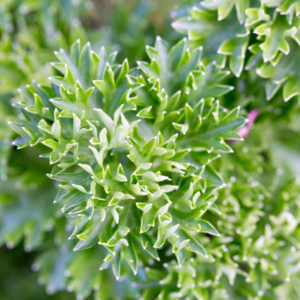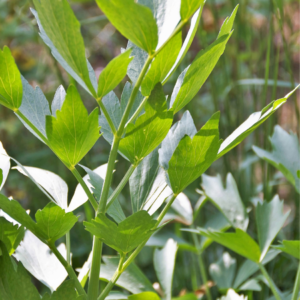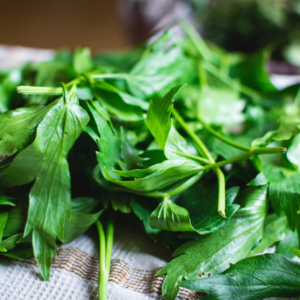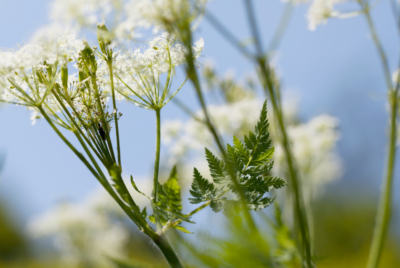Lovage plants – Aiding Digestion!
Many culinary enthusiasts are now discovering the hidden gem of the herb world – lovage plants. This versatile herb is making waves in the culinary scene for its unique flavor profile that lies somewhere between celery and parsley. Learn all about the history, uses, and benefits of lovage and how you can incorporate this unsung hero into your cooking repertoire with our ultimate guide.
Key Takeaways:
- Lovage is gaining popularity: Lovage is becoming a favored herb in the culinary world due to its unique flavor profile and versatility in dishes.
- Distinct celery flavor: Lovage is noted for its strong celery-like flavor, making it a great substitute for celery in recipes.
- Various culinary uses: Lovage can be used in a variety of dishes, including soups, stews, salads, and even cocktails, adding depth and complexity to flavors.
- Easy to grow: Lovage is a hardy perennial herb that is easy to grow in home gardens, providing a fresh supply for culinary experiments.
- Health benefits: In addition to its culinary appeal, lovage has potential health benefits, such as aiding digestion and providing important nutrients like vitamin C.

History of Lovage
Origins and Ancient Uses
Ancient civilizations, such as the Greeks and Romans, revered lovage for its culinary and medicinal properties. Believed to have originated in the Mediterranean region, this herb boasts a history of use dating back over two thousand years. In ancient times, people prized lovage for its strong, aromatic flavor, often using it to enhance the taste of foods and beverages.T
Medieval and Renaissance Era
During the Medieval and Renaissance era, lovage continued to be a staple in European kitchens and apothecaries. Its versatility in cooking and healing made it a prized herb among chefs and herbalists alike. Lovage was commonly used to flavor soups, stews, and sauces, as well as in medicinal remedies to treat various ailments. It was also believed to have mystical properties and was used in spells and rituals.
With its popularity rising in Europe during this time, lovage became a symbol of abundance and prosperity. It was cultivated in monastery gardens and castle courtyards, with its bold flavor and potent aroma infusing dishes with a unique character.

Culinary Delights
Flavor Profile and Aroma
One of the most remarkable aspects of lovage is its bold and complex flavor profile. It has a taste that is reminiscent of celery but with a more intense and herbaceous flavor. The aroma of lovage is strong and fragrant, with notes of parsley and celery seed. This herb can uplift and enhance the taste of any dish it is added to, making it a favorite among chefs looking to add depth to their creations.
Pairing Lovage with Other Herbs
Flavor: One exciting aspect of lovage is how well it pairs with other herbs in the kitchen. Its robust flavor can complement a wide range of herbs such as thyme, oregano, and sage. When used in combination, lovage can help bring out the best in these herbs, creating a harmonious and flavorful blend that adds a unique twist to dishes.
This herb is a versatile ingredient that can be used in various traditional cuisines around the world. Its strong flavor and aroma make it a popular choice in dishes like soups, stews, and stocks. Lovage can also be used to flavor meats, seafood, and vegetable dishes, enhancing the overall taste profile with its distinctive notes.
Lovage in Traditional Cuisine
On one hand, lovage has been used in European cuisine for centuries, particularly in countries like Hungary and Poland. Here, it is a key ingredient in traditional dishes such as soups, sauces, and salads, adding a unique flavor that sets these recipes apart.

Health Benefits
Digestive Aid and Anti-Inflammatory Properties
One of the key health benefits of lovage is its digestive aid properties. Lovage contains compounds that can help promote healthy digestion by reducing gas, bloating, and indigestion. Additionally, lovage has been used for centuries in traditional medicine to help soothe inflammation in the digestive tract, making it a natural remedy for conditions such as gastritis and irritable bowel syndrome.
Antioxidant and Antibacterial Properties
One of the lesser-known benefits of lovage is its antioxidant and antibacterial properties. Lovage is rich in antioxidants, which help protect the body from oxidative stress and reduce the risk of chronic diseases. Additionally, lovage contains antibacterial compounds that can help fight off harmful bacteria and infections in the body.
Further research is needed to fully understand the extent of lovage’s potential health benefits, but incorporating this herb into your diet can be a flavorful way to boost your overall wellness.
Skin and Hair Care
Care for your skin and hair with the help of lovage! This herb is not only beneficial when consumed but can also be used topically to improve the health and appearance of your skin and hair. Lovage contains vitamins and minerals that nourish the skin and hair, promoting a healthy glow and luscious locks.

Growing and Harvesting Lovage Plants
Climate and Soil Requirements
Now, when it comes to growing lovage, it thrives best in temperate climates similar to its native Mediterranean region. This herb prefers full sun but can tolerate some light shade. As for the soil, lovage prefers rich, moist, well-draining soil with a pH level between 6.5 and 7.5. It’s vital to ensure good drainage to prevent root rot.
Planting and Maintenance Tips
With lovage, it’s best to plant in the spring either from seeds or divisions from an existing plant. Keep the soil consistently moist, especially during the first growing season. Mulching around the plant can help retain moisture and suppress weeds. Lovage can grow quite tall and may require staking to prevent the stems from bending or breaking.
- Plant in the spring for optimal growth
- Keep the soil consistently moist
- Mulch to retain moisture and suppress weeds
After planting, regular watering and fertilizing with a balanced fertilizer can help promote healthy growth. Any damaged or wilted leaves should be removed promptly to encourage new growth.
- Regular watering and fertilizing are crucial
- Remove damaged or wilted leaves to promote new growth
Harvesting and Drying Techniques
To harvest your lovage plants, cut the stems at the base of the plant, leaving some stems for continued growth. You can harvest leaves as needed throughout the growing season. For drying, tie small bunches of stems together and hang them upside down in a dry, well-ventilated area. Once dry, strip the leaves from the stems and store them in an airtight container away from light and heat.

Cooking with Lovage
Your culinary adventures with lovage are about to reach new heights as you discover the various ways this versatile herb can be used to elevate your dishes. From teas to soups to garnishes, lovage brings a unique flavor profile that is sure to impress your taste buds and your guests.
Lovage Plants Tea and Infusions
With its aromatic and slightly sweet taste, lovage makes for a delightful addition to teas and infusions. Simply steep a few fresh lovage leaves in hot water for a soothing cup of tea that not only tastes wonderful but also carries a host of health benefits.
Lovage Plants in Soups and Stews
The rich and bold flavor of lovage shines in soups and stews, adding depth and complexity to your dishes. Whether you’re making a hearty vegetable soup or a comforting beef stew, a touch of lovage can take your creation to the next level. Its strong taste pairs well with meats, root vegetables, and creamy broths, making it a versatile herb for a wide range of recipes.
To infuse your soups and stews with the essence of lovage, simply chop up the leaves and add them to your simmering pot. The herb will release its aromatic oils and flavors, transforming your dish into a culinary masterpiece that will have everyone asking for seconds.
Lovage Plants as a Garnish and Decoration
Finishing off your dishes with a sprinkle of lovage not only adds a pop of fresh green color but also imparts a unique flavor that will impress your diners. Whether you’re garnishing a salad, a pasta dish, or a roasted chicken, lovage’s herbaceous undertones will enhance the overall taste and presentation of your meal.
For an elegant touch, try using lovage leaves as a decorative border on platters or as a garnish for cocktails. The versatility of this herb knows no bounds, and once you start experimenting with lovage in your cooking, you’ll wonder how you ever lived without it.
Modern Twists and Innovations
Lovage in Contemporary Cuisine
Innovations in the culinary world have brought lovage to the forefront of contemporary cuisine. Chefs are incorporating this versatile herb into a variety of dishes, from soups and salads to main courses and sauces. Its unique flavor profile, often described as a mix of parsley and celery with hints of anise, adds depth and complexity to the dishes it graces. Lovage’s aromatic qualities make it a standout ingredient in modern cooking, elevating traditional recipes to new heights.
Lovage-Based Cocktails and Beverages
Innovations in mixology have seen the rise of lovage-based cocktails and beverages in trendy bars and restaurants. Bartenders are experimenting with lovage-infused syrups, tinctures, and garnishes to create refreshing and flavorful drinks. Whether muddled in a cocktail or steeped in a spritzer, lovage adds a herbaceous note that delights the palate.
The versatility of lovage extends beyond the plate, as it finds its way into glasses as well. Its bright, herbaceous flavor profile pairs beautifully with citrus, making it a natural choice for crafting innovative and delicious beverages.
Lovage-Infused Oils and Vinegars
Lovage-Based oils and vinegars are another modern twist on this underappreciated herb. By infusing lovage into oil or vinegar, chefs are able to capture its essence and preserve it for later use. Lovage-infused oils can be drizzled over salads, pasta, or grilled vegetables for an added layer of flavor, while lovage-infused vinegars make for tangy dressings and marinades.
Another option for utilizing lovage-infused oils and vinegars is to use them as a finishing touch on dishes just before serving. The herbaceous notes of lovage can complement a wide range of flavors, making it a valuable addition to any chef’s pantry.

Final Words on Lovage Plants
On the whole, lovage is truly a remarkable herb that has been making waves in the culinary world. With its unique flavor profile and versatile uses, lovage has quickly become a favorite among chefs and home cooks alike. Its ability to enhance a wide range of dishes, from soups and stews to salads and cocktails, makes it a must-have herb in any kitchen.
So next time you’re looking to jazz up your cooking and try something new, don’t forget to reach for the lovage. Its fresh, vibrant taste will take your dishes to a whole new level. It will leave you wondering how you ever lived without it. Embrace the lovage craze and let this little-known herb revolutionize your culinary creations!
FAQ’s about Lovage Plants
Q: What is lovage?
A: Lovage is a lesser-known herb that is gaining popularity in the culinary world for its unique flavor profile.
Q: How does lovage taste?
A: Lovage has a taste reminiscent of celery, with hints of parsley and a touch of anise. This makes it a versatile herb in cooking.
Q: How can lovage be used in cooking?
A: Lovage can be used fresh or dried in various dishes such as soups, stews, salads, and as a seasoning for meats and vegetables.
Q: Is lovage easy to grow?
A: Lovage is a hardy perennial herb that is relatively easy to grow in the garden. It requires minimal maintenance once established.
Q: Are there any health benefits associated with lovage?
A: Lovage is believed to have medicinal properties and has been used historically to aid digestion, reduce inflammation, and as a diuretic.
Bay Leaf – The Ancient Remedy that Modern Medicine is Finally Rediscovering!
Marjoram – Transform Your Health and Cooking with This Miracle Herb
Discover the Hidden Health Benefits of Tarragon
Heal Your Gut With Slippery Elm – A Dietary Must-Have
Discover the Benefits of Arnica – Natures Pain Reliever
What herb has the most anti – oxidants?


